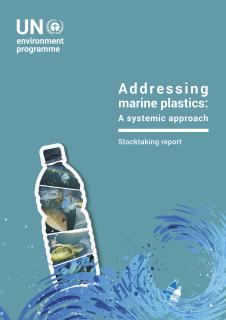
This report provides a summary of the available literature on the key sources and locations of marine plastics, along with an analysis of the problem products and polymers making up marine plastics and microplastics. It also looks at what is currently being done to address the problem of marine plastics and summarises existing policy responses in order to lay the groundwork for future action.
The findings show that, to date, relatively few studies have quantified the flow of plastics into the marine environment and that existing studies tend to use the same underlying data on plastic waste generation in their calculations, resulting in similar findings and ranges. However, based on the limited data, this report notes that the majority of plastics appear to enter the ocean directly from maritime activities and coastal communities or from inland water catchments via major river systems. Where plastics come from depends on the characteristics of the region. For example, in regions with high fishing and shipping activities, such as the North Sea, sampling studies find marine activities make up a large share of the plastics collected. Additionally, it is clear that single-use and short-lived products (such as bottles, plastic bags, and straws) that are left as waste are key contributors to marine plastics across the globe.
To address this environmental challenge, the report highlights the economic, social, and environment co-benefits of several opportunities, including adopting circular plastics models and developing innovations in new materials and product systems. It notes that a subsequent report will analyse the gaps, barriers, and opportunities and provide specific recommendations for action.
